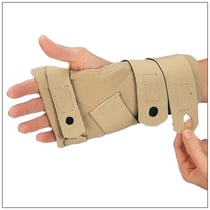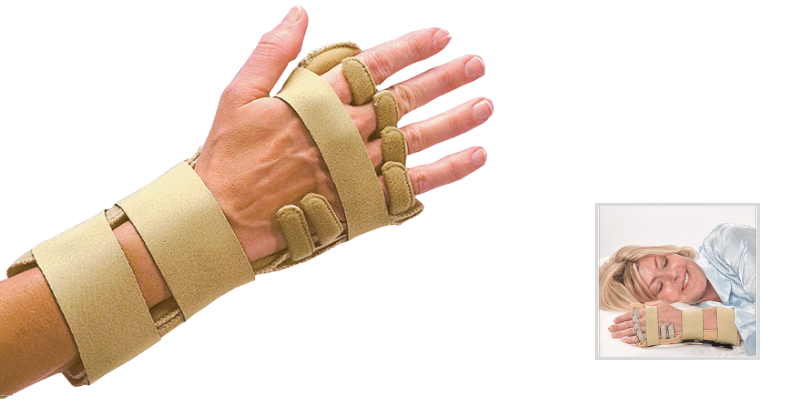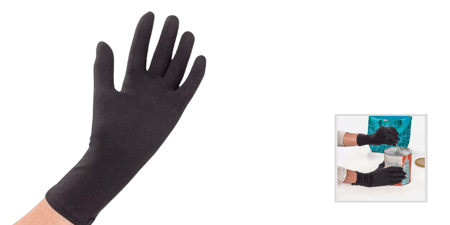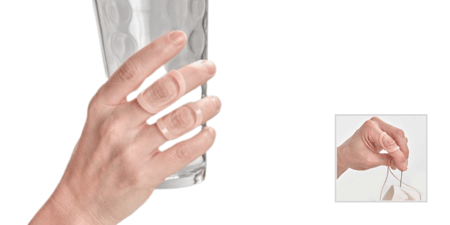With Rheumatoid Arthritis, the immune system mistakenly attacks the body’s own tissues affecting the lining of the joints and causing swelling that may eventually result in bone erosion and joint deformity. The wrist and fingers are involved in approximately 75% of cases.
The early stages of RA include pain, swelling, and stiffness upon waking, while the later stages include progression to significant deformity and instability. A common treatment in the early stages is the use of a resting orthosis at night during sleep.
Nighttime Use of an Orthosis
Many years ago, hand therapists used the orthosis at night simply because it made sense physiologically to the inflammatory process and because our clinical experience told us it was helpful for symptoms. Today, there is some scientific research on this topic.
What does the evidence say?
- According to a randomized controlled trial with 50 individuals with RA, those who wore night orthoses had a significant reduction in pain, increase in function, and improvement in pinch and grip strength compared to those who did not use the night time orthosis. They also reported that they were “better” or “much better” related to their symptoms.
- A repeated measures designed study with 39 persons with RA found that resting hand orthoses for night time were effective for pain relief and that people with RA were more likely to prefer and comply with soft orthoses.
- Finally, a review of studies on RA, found that patients who wore a night time orthosis for 2 months reported that they preferred using the orthosis in comparison to not and preferred padded orthoses in comparison to unpadded ones.
Nighttime Treatment of RA
What should we look for in a night-time hand and wrist orthosis for RA symptoms?
A night-time resting pan orthosis is recommended for pain, edema, and stiffness associated with RA. The resting pan orthosis should be fabricated or custom fit to position the hand in the opposite direction of an existing or potential deformity.
- The wrist should be positioned in neutral to avoid the tendency toward radial deviation.
- The metacarpal phalangeal (MCP) joints should also be positioned in neutral to prevent ulnar deviation.
- The MCP joints tend to move into volar subluxation and the orthosis should be contoured to support the MCP joints at twenty to forty degrees of flexion to slacken the pull of the flexor tendons and to hold intrinsic muscles in a mid-position.
- The interphalangeal joints can be left free or can be held in a slight flexion depending on the presence of deformities in these joints.
Strapping or padding in the orthosis should comfortably hold the the wrist and digits in neutral. Finally, as mentioned above, since individuals prefer and are more complaint with the use of soft, padded orthoses, resting pan orthoses should involve soft padding when possible.
The softly padded Comforter Splint used at night during sleep appropriately addresses pain, stiffness, and edema associated with RA. The Comforter Splint supports the wrist and fingers in neutral with adjustable stays that hold the MCP’s in neutral. The thumb CMC is supported but the MP and IP and the IP joints of the fingers are free to allow for nighttime activities.
Comforter™ Splint
 For more information on the Comforter Splint click on the button below
For more information on the Comforter Splint click on the button below
Blog References: For more information on this topic, click to see the references for this blog post





